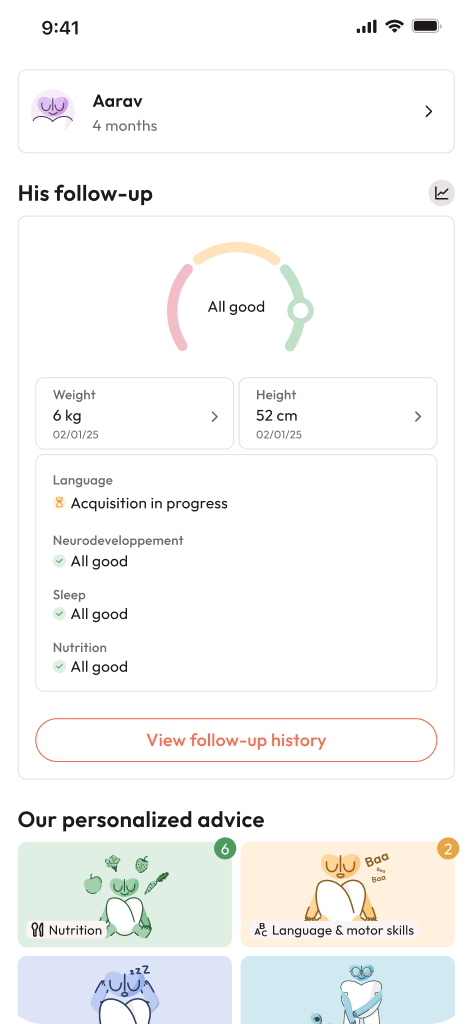Unexpected tightening in the belly. A strange sensation, almost as if the uterus contracts on its own—sometimes barely perceptible, other times making you pause during an otherwise uneventful day. For parents, especially those traversing pregnancy for the first time, these moments can stir up a flurry of questions. Are these early signs of labour? Should you worry, or simply breathe and wait? The phenomenon known as Braxton Hicks contractions carries a reputation for confusion, yet understanding them brings a sense of calm amidst uncertainty. Parents often wonder if what they’re experiencing is ordinary, whether they’re missing warnings, or if the discomfort signals something else lurking. What, precisely, makes these uterine “practice contractions” appear? Can one confidently differentiate them from genuine labour pain? And above all, how does one integrate comfort and reassurance into the unpredictable landscape of pregnancy? Let’s untangle these questions, explore their physiological roots, and equip you with evidence-based strategies to support both peace of mind and well-being.
Braxton Hicks Contractions: The Medical Landscape Explained
Braxton Hicks contractions—sometimes called “false labour” or practice contractions—are not a warning sign but an expected part of pregnancy’s rhythm. Medically, these are defined as sporadic, painless or mildly uncomfortable uterine contractions that typically commence during the second or third trimester, commonly felt as irregular tightening across the lower abdomen. Often described as a muscle flex, a gentle squeeze, or simply a taut sensation beneath the skin, they rarely escalate to pain. But why does this muscular workout occur? The scientific explanation: they prime the uterus for the real work ahead, toning muscle fibres and encouraging blood flow rich in oxygen towards the growing baby.
“‘Irregular’ best describes their character. Sometimes they surface after a long walk, with a full bladder, or even following a sudden laugh. Dehydration, physical activity, sexual intercourse, or the stress of a demanding day can also provoke these contractions. Unlike true labour, there’s no evolving pattern. The uterus tightens for about 30 seconds, sometimes stretching to two minutes, then relaxes as unpredictably as it began. And crucially, there’s never progressive intensity, frequency, or involvement of the cervix—hallmarks reserved for authentic labour.
The origin of their name goes back to Dr. John Braxton Hicks, who first documented this curious pregnancy phenomenon in the 19th century. Since then, their significance in the cascade of birth preparation has only become clearer.
When and How Braxton Hicks Contractions Happen
Pregnancy unfolds in chapters, and so does the presence of Braxton Hicks contractions. For some, they may begin as early as 16 weeks, though more often around the mid to late second trimester. At first, they’re infrequent, mere blips—possibly once or twice per day or not at all. Progress into the third trimester, however, and episodes may become more prominent. Picture sitting quietly after a long day and feeling your belly suddenly tense, then soften—a momentary event, gone as abruptly as it began.
No consistent schedule develops. It’s not uncommon to go without noticing any for days, then experience a series of mild tightenings in the evening after a busy day. Unlike the relentless regularity of true labour, Braxton Hicks contractions behave more like a random rehearsal than the main event.
Changing your activity or body position, hydrating well, and simply resting usually dispel them, while standing for long stretches or strenuous activity might make them appear. It’s important to clarify: frequency of these contractions is no predictor of imminent labour. Some never feel them. Others encounter them daily, with no consequence for the timing of childbirth.
Triggers and Causes: The Physiology Behind the Sensations
The uterus, a remarkable muscular organ, prepares for the monumental work of labour with these so-called practice contractions. They serve both to tone the muscle (think of it as the uterus hitting the gym) and to facilitate blood flow, providing the baby with optimal nourishment during late pregnancy.
But what turns the switch? Common triggers, validated by medical research, include:
- Dehydration: Reduced fluid intake can signal the uterus to contract.
- Physical exertion: Extended walking, prolonged standing, or lifting can create just the right conditions for a twinge in the belly.
- Full bladder: An often-overlooked but significant cause; pressure around the uterus changes when the bladder is distended.
- Sexual activity: Both orgasm and increased pelvic blood flow can prompt Braxton Hicks contractions.
- Stress and emotional fluctuations: A rush of adrenaline or anxiety has tangible effects on the smooth muscle of the uterus.
Occasionally, even the baby’s sudden shift or a gentle prod to the belly can provoke a fleeting episode.
Hormones also play their part—elevated progesterone, a landmark of pregnancy, relaxes the gut, slowing digestion, potentially causing bloating or constipation. Digestive slowdowns can make the lower abdomen feel even firmer, though this tightness differs from uterine contractions. The stretching of the round ligaments (the bands supporting the uterus) also add to sensations of fleeting tension, especially with abrupt movements.
Recognising Symptoms: What Do Braxton Hicks Contractions Feel Like?
What’s the real-life experience of a Braxton Hicks contraction? Imagine the front of your abdomen tightening—perhaps with a sense of mild squeezing, sometimes firmness, but rarely pain. Typically these episodes last 30 seconds to two minutes, are irregular, and do not intensify, nor do they interfere with daily routines.
Some describe it as “muscle hardening,” akin to a subtle workout. It does not radiate around the lower back nor become more severe. Often, taking a sip of water or lying down brings quick relief. In contrast, genuine labour builds with a relentless drive—stronger, closer together, radiating discomfort from the lower back, progressively swallowing up the belly with each wave, and never ceasing regardless of movement or hydration.
Parents keeping a symptom diary quickly notice the unpredictability of Braxton Hicks contractions. Their sporadic nature helps in distinguishing them from true labour—no escalating pain, no consistent timing.
Braxton Hicks vs. True Labour: Sorting Signal from Noise
One of the most challenging aspects for expectant parents? Deciding whether it’s a rehearsal or the main show. Differentiating between Braxton Hicks contractions and true labour is less about a single feature, more a combination of clues.
- Pattern: Braxton Hicks are irregular—sometimes close together, sometimes hours apart. True labour steadily finds a rhythm, contractions at regular intervals that gradually shorten over time.
- Intensity: Practice contractions might be uncomfortable, but rarely painful. True labour ramps up—each contraction heavier, stronger, and entirely resistant to rest or hydration.
- Cervical change: The cervix stays closed and unchanged with Braxton Hicks. In true labour, the cervix softens (effaces) and begins to open (dilates).
- Location: The former is mostly limited to the lower or front of the abdomen. Real labour often starts in the back and radiates to the belly.
- Associated symptoms: Additional signs—bleeding, loss of fluid (water breaking), or obvious pressure—point toward the onset of actual labour.
Uncertainty is common—the advice? Trust your perception, but always seek prompt assessment if you’re before 37 weeks, if there’s significant pain, bleeding, or a sudden change in fetal movement.
Hard Belly and Pregnancy: Beyond Braxton Hicks
Not all instances of a hard belly are linked to Braxton Hicks contractions. As pregnancy advances, several factors might cause brief or sustained abdominal firmness. Rapid fetal growth stretches the uterus, at times making the abdomen feel firm or tense, particularly during or after the baby’s vigorous movement. Meanwhile, the aforementioned round ligaments may trigger sharp, brief discomfort when shifting positions.
Don’t overlook digestive symptoms: slow bowel motility, driven by progesterone, means constipation or bloating are common—with a correspondingly firmer lower belly. Unlike rhythmic contractions, these sensations are not cyclical and usually relate to digestion, posture, or fatigue.
A hard spot, if localized and not associated with other symptoms, poses no danger. Persistent pain, accompanying bleeding, fever, abnormal discharge, urinary changes, or decreased fetal movement merit quick consultation with a healthcare provider.
Comfort Strategies: Practical Tips for Easing Discomfort
So, how do you support your comfort when Braxton Hicks contractions pop up? Practical, simple steps can make a noticeable difference:
- Rest periodically: Take breaks throughout the day, especially after activity. Lying on your left side may help relax the uterus.
- Hydrate well: Aim for at least two litres of fluid daily; dehydration is a common trigger.
- Bladder care: Empty your bladder often—reducing pelvic pressure can ease uterine tightening.
- Incorporate fibre: Whole grains and fresh fruits and vegetables not only nourish but also help maintain regular digestion, reducing firmer sensations from bloating.
- Move gently: Light activity can sometimes resolve irregular tightening, but avoid heavy lifting or strenuous exercise.
- Stretch and relax: Practise prenatal yoga, deep abdominal breathing, or mindfulness meditation to release muscle tension.
- Warmth and relaxation: A warm (not hot) bath or a gentle heat pack on the lower abdomen is soothing.
- Balanced pacing: Mix periods of rest with gentle activity and self-care.
- Mild herbal teas and a light snack may help with relaxation.
Each of these strategies contributes to reduced frequency and intensity of episodes. Still, remember: discomfort that changes in nature, becomes severe, or is linked to symptoms like bleeding, fever, or less fetal movement calls for immediate attention.
When to Take Action: Signs Requiring Medical Assessment
Most encounters with Braxton Hicks contractions are benign, but a few scenarios call for prompt medical input:
- Persistent, strong contractions that continue with rest or movement
- Frequency—contractions every 5 minutes or less for over an hour, especially before 37 weeks’ gestation
- Intense or ongoing pain
- Vaginal bleeding or any abnormal discharge
- Fever, chills, or a general feeling of being unwell
- Clearly decreased or significantly changed fetal movement
- Indications of preterm labour: frequent contractions with pelvic pressure and pain in the pelvis or lower back
Documenting the frequency, duration, and nature of contractions aids your healthcare team in offering tailored guidance. Maintaining open lines with your provider brings reassurance and ensures that timely intervention is always within reach.
Impact on Pregnancy and Birth Readiness
Despite their disruptive reputation, Braxton Hicks contractions play an essential role in preparing both uterus and parent for the demanding process of childbirth. Toning muscular tissue, encouraging optimal blood flow, these contractions ultimately facilitate efficient labour when the moment arrives. Importantly, research confirms they cause no harm to the baby; if anything, they’re regarded as beneficial practice.
Awareness brings its own benefit. Monitoring episodes, discussing symptoms with your healthcare team, and communicating with your support network—all these build confidence and reduce anxiety as you move closer to delivery.
Myths, Misconceptions, and Navigating Emotional Well-being
Common misunderstandings often accompany Braxton Hicks contractions:
- They do not indicate that labour has started.
- There’s no necessity to experience them—each pregnancy is unique.
- Their frequency or intensity does not predict delivery timing.
- Medical intervention is rarely needed unless additional symptoms are present.
Emotionally, fluctuating symptoms can provoke unease. If anxiety sets in, techniques like mindfulness, relaxation breathing, or even attending prenatal wellbeing sessions can offer solace. Talking with trusted family or healthcare staff often helps anchor confidence through the unpredictable journey of late pregnancy.
Other Common Discomforts: Digestive Slowdown and Ligament Tension
Not everything felt during pregnancy traces back to Braxton Hicks contractions. Digestive sluggishness is a hallmark of expectant physiology—progesterone slowing motility, resulting in constipation, bloating, and sometimes a stubbornly firm lower belly. Round ligament pain—a fleeting, sharp discomfort usually noticed with movement—adds another layer, triggered by the stretching required to accommodate a growing uterus.
When tightness is periodic, especially in the evening or after long periods of standing, reassurance is usually all that’s needed. However, new, severe, or ongoing discomfort, especially with additional symptoms, should be evaluated without delay.
Practical Management:
- Rest, change positions, and avoid sudden movements.
- Prioritise fluids and fibre-rich meals.
- Relieve muscle tension with gentle warmth.
- Practice slow, mindful breathing.
- Avoid heavy loads or strenuous gym routines.
Key Takeaways
- Braxton Hicks contractions are natural, harmless episodes that prepare the body for birth.
- They usually present as irregular, mild tightenings, relieved by lifestyle adjustments—specifically, hydration, frequent rest, and gentle activity.
- Firmness in the belly also results from digestive changes or ligament stretching, all common during healthy pregnancies.
- Understanding the distinctions between these “practice contractions” and true labour allows parents to remain calm and informed.
- Any persistent pain, bleeding, reduced fetal movement, or abnormal symptoms warrants professional assessment.
- Adopting practical habits—hydration, regular rest, attention to digestion, light exercise, and stress management—provides reliable comfort.
- Keeping a detailed record of symptoms and maintaining communication with healthcare professionals assures parents throughout pregnancy.
- When in doubt or concerned, resources and support—from practitioners to digital companions like Heloa—offer guidance, personalised advice, and peace of mind.
Questions Parents Ask
Can Braxton Hicks contractions be painful for some people?
Absolutely. While Braxton Hicks contractions are typically described as painless or only a mild tightness, some parents report experiencing them as remarkably intense or even uncomfortable. The spectrum is broad—what feels like a slight squeeze for one individual may be interpreted as pain by another. It is genuinely subjective and tied to each body’s unique sensitivity. If discomfort lingers, escalates, or interferes with your daily routine, sharing your experience with your healthcare provider is wise. Listening to your own sensations is always valuable.
Should I be concerned if Braxton Hicks contractions become frequent, like every 5 minutes?
Rising frequency of Braxton Hicks contractions, particularly if they cluster every five minutes, deserves attentive monitoring. If you’re later in your pregnancy—say, at 35 weeks or beyond—it is important to remain observant. Although these contractions typically remain irregular and benign, a shift towards frequent, regular patterns—especially when paired with pain, bleeding, or variations in the baby’s movements—merits immediate contact with your healthcare provider. Keeping open communication ensures you receive timely, individually personalised recommendations and the reassurance you require.









